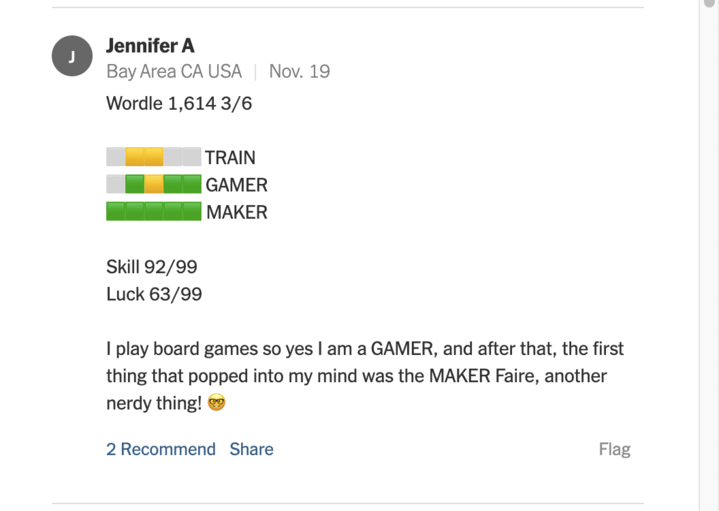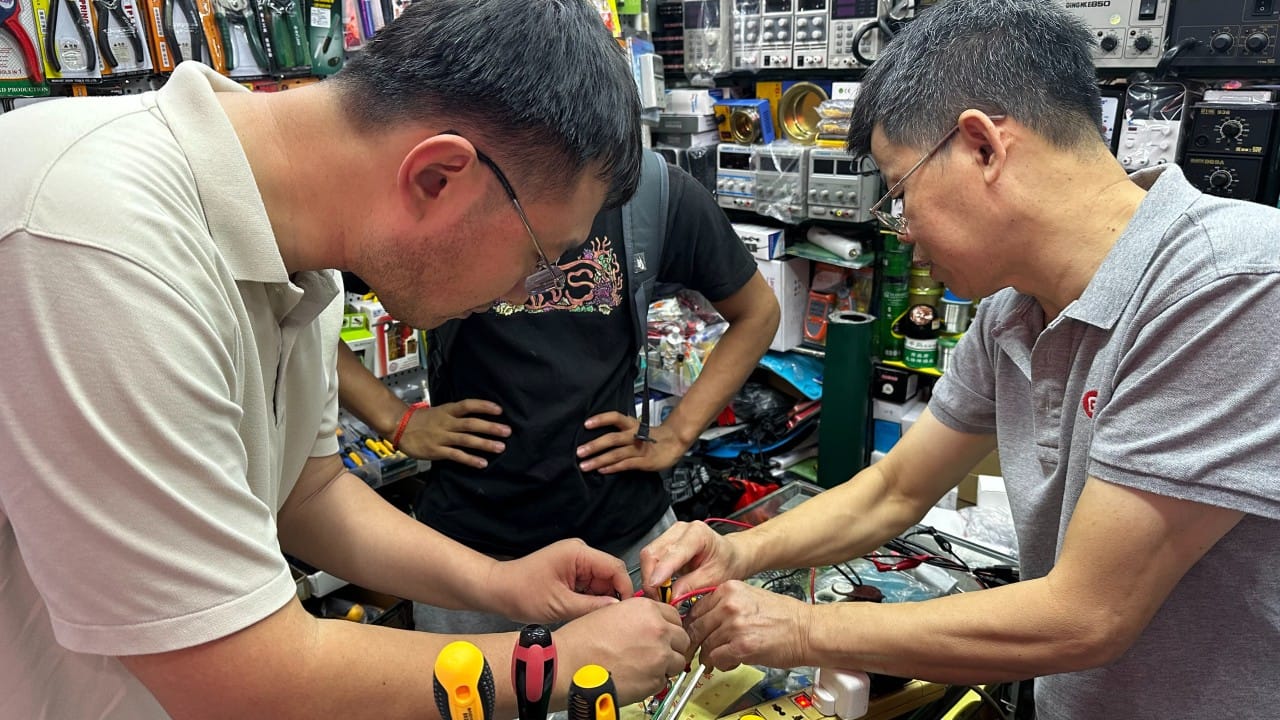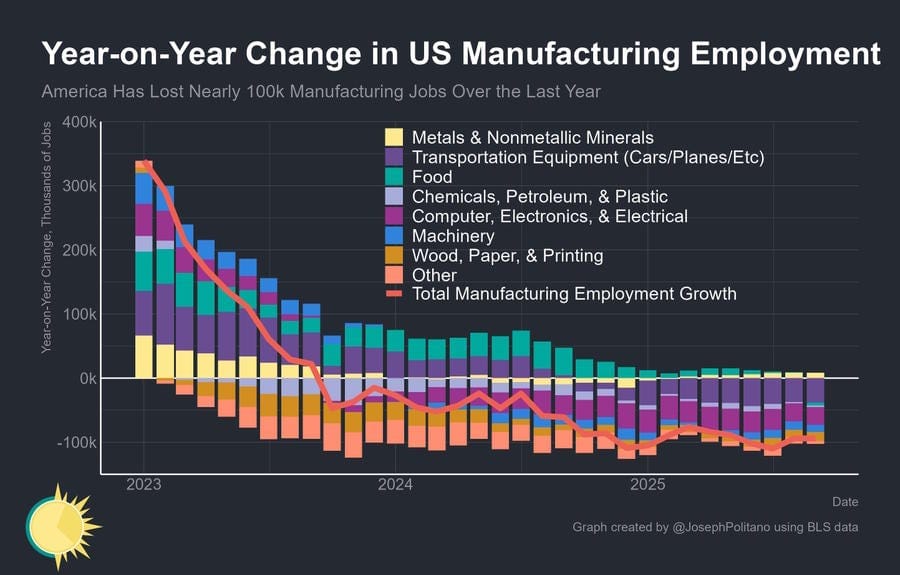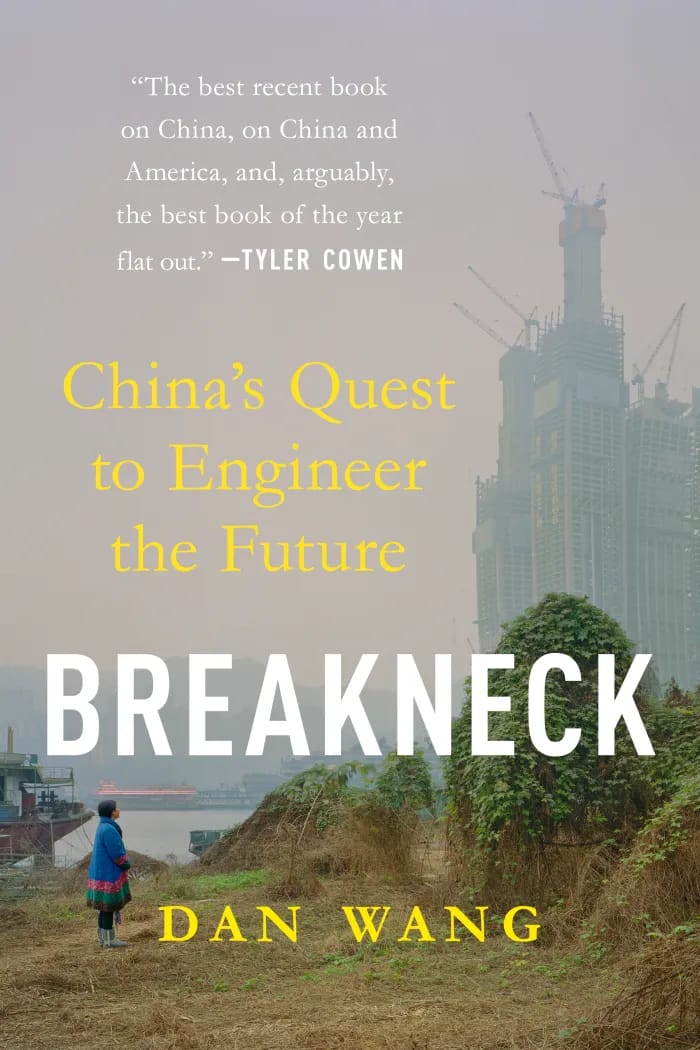- Make Things
- Posts
- Maker has its Wordle moment
Maker has its Wordle moment
It's our favorite five-letter word.

“Maker” was the answer to Wordle No. 1,614 on November 19th, published in the New York Times. A friend who plays Wordle every day told me so I was able to get it on the first guess! In the website’s Wordle Review comments, Jennifer A thought of Maker Faire. Perfect.

Table of Contents
Shenzhen: Where curiosity turns into coherence
Duleesha Kulasooriya of Deloitte Center for the Edge wrote this article on LinkedIn about his visit to Shenzhen and the Shenzhen Maker Faire. I asked him if I could share his article with the readers of this newsletter.

Huaqiangbei is “the bloodstream” of Shenzhen
I arrived in Shenzhen by ferry from Hong Kong — a short crossing that feels like moving through time as much as space. When the doors opened, the future was already waiting.
Outside Shekou Port, every car was an EV — green plates glinting in the morning light. Two-wheelers buzzed silently through traffic, pausing at battery-swap kiosks tucked between fruit stalls and coffee shops. The roads were wide, clean, edged with green. Singapore’s order, multiplied a hundredfold. A city that didn’t just modernize — it accelerated.
I’ve been coming here for over a decade, tracking the maker movement as it sprouted, stretched, and ultimately reshaped global supply chains. This time I came with my son, back to Maker Faire Shenzhen, the gravitational center of making.
Maker Faire here isn’t a hobby fair — it’s a portal. Kids solder beside engineers. Humanoid robots shake hands with teenagers. TinyML models train on thumb-sized boards. Drone parts lie scattered like spare dreams. Under bright lights and falling confetti, a band of teenagers plays 3D-printed instruments in a kind of DIY Coachella for the imagination.
Our hosts from Seeed Studios welcomed us the way families do — guiding us through the Faire, feeding us, laughing with us. No marketing sheen. No bravado. Just quiet pride: “Come, let us show you our home.”
And then there was Huaqiangbei. If Maker Faire is the festival, Huaqiangbei is the bloodstream — floors of components stacked to the ceiling, shops that sell only SMA connectors, others only transformers, others only buttons: hundreds of types, thousands of colors, each in its tiny packet.
This is where one of the most beautiful moments of the trip unfolded.
My son wanted to build a lightsaber. We needed LEDs, batteries, and a step-down transformer — three different shops, three different owners. Each could have handed us the parts and moved on. They’ll never see us again. By any measure, this was a small, forgettable sale.
But instead, they tested every LED strip, every battery, every transformer. They rejected the faulty ones, retested the good ones, explained how the pieces connected. One vendor spent what felt like half an hour poking at a transformer with a tester, making sure Rohan didn’t walk away with something that would blow the circuit.
It was careful. Proud. Human.
People talk about China as if it’s a machine — efficient, vast, impersonal. But what I’ve seen over a decade of coming here is something else entirely: generosity, curiosity, and an inner drive to create.
You see it in the way makers teach each other at workshops. In how Seeed’s team ushers visitors like family. In how a shopkeeper tests components as if sending his own kid home with a project. In hotel corridors where delivery robots glide silently at night. In a mall where a full-scale eVTOL sits casually on display, as if it were a new kind of sofa. In the world’s only Bambu Labs store, where 3D-printed shoes and helmets look like they’ve arrived from three years in the future. In Pop Mart walls glowing with characters that became global icons before the West even noticed. And in late-night dinners with thinkers and dreamers who see making not as pastime, but as a cultural operating system.
Here’s what I’ve come to understand: China’s advantage isn’t magic. It isn’t mystical. It’s coherence — hardware, software, energy, logistics, culture, and craft all aligned, all moving in phase, all pointed toward making things real.
In a fragmented world, that coherence feels almost radical.
Every time I come back to Shenzhen, I’m reminded that maker culture is more than an ecosystem. It’s a bridge — one of the most meaningful between China and the rest of the world. Not through politics or ideology, but through the universal joy of building something with your hands and watching it come alive.
And maybe that’s the lesson we need most now: We innovate better when we build things together.
Breakneck: China’s Quest to Engineer the Future
I just started reading Dan Wang’s Breakneck: China’s Quest to Engineer the Future. Wang begins his book with the observation that he find it “comical” that America and China so often are butting heads “because I am sure that no two peoples are more alike than Americans and Chinese.” That’s been my perception as well.
Wang writes about this rivalry between the two superpowers. His thesis is that China is run by engineers and America is run by lawyers. “The starkest contrast between the two countries is the competition that will define the twenty-first century: an American elite, made up of mostly lawyers, excelling at obstruction, versus a Chinese technocratic class, made up of mostly engineers, that excels at construction.”
I almost don’t want to say it but Wang helps me understand why the maker movement is thriving in China while it struggles for relevance in the US. The irony is that the US needs makers more than ever, and as a country, we have to foster that can-do creative spirit in more people. The maker movement is one of our own best exports!
How tariffs on intermediate goods hurt US manufacturing
Noah Smith explains on his Substack Noahpinion why tariffs on intermediate goods are hurting U.S. manufacturing as we make fewer things domestically, not more. He uses a chart based on Bureau of Labor Statistics to show the decline in US manufacturing jobs over the last two years.

Smith explains the difference between intermediate goods and final goods, the latter being the kind of product that sits on shelves at Wal-Mart. “Almost half of what America imports from overseas is intermediate goods,” and putting tariffs on intermediate goods hurts makers who source their components overseas to create the final product that they sell.
So why don’t you want to tax intermediate goods? Because you want to make as much stuff as you can make before you start redistributing it. If the purpose of taxes is to redistribute the economic pie,2 you want to redistribute as big of a pie as you possibly can. Taxes on things like steel, auto parts, and computer chips cause the economy to make fewer cars, houses, computers, etc. So when you collect taxes and then give people money to spend, there are fewer cars, houses, and computers for them to buy with the money you give them. You should have just let capitalism work its magic and make as much stuff as possible, and then worried about how to redistribute.
Read Noah Smith’s full article HERE.
Maker Faire Mostar
Maker Faires are testing my geographical knowledge. Mostar is a city in Bosnia and Herzegovina. Maker Faire Mostar was held this year on October 4th for the first time. The event, which received funding from the European Union and the Western Balkans Fund, had a fun promotional video of Makey in motion.
Happy Thanksgiving
I won’t publish a newsletter next week. I wish you a Happy Thanksgiving feast and a long weekend for making something. Circuit bending is always an option.

Make Things is a weekly newsletter for the Maker community from Make:. This newsletter lives on the web at makethings.make.co
I’d love to hear from you if you have ideas, projects or news items about the maker community. Email me - [email protected].

